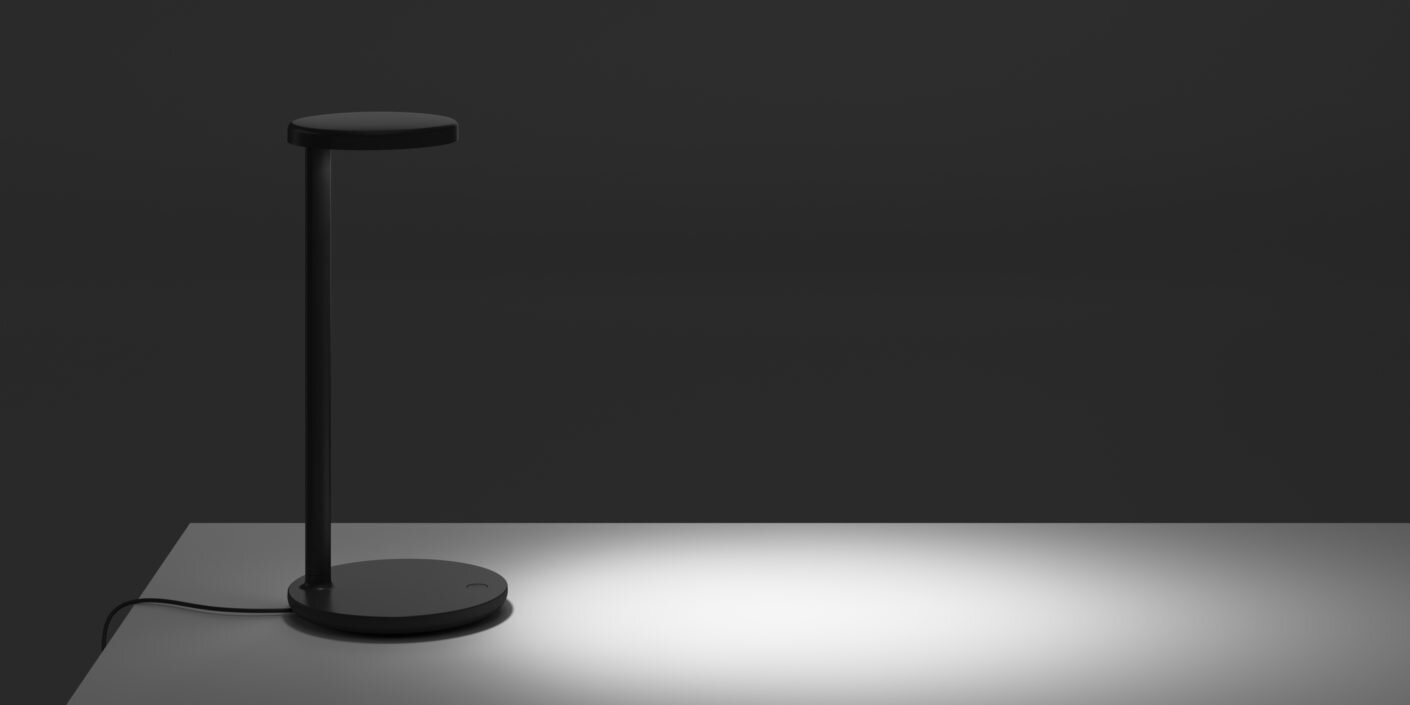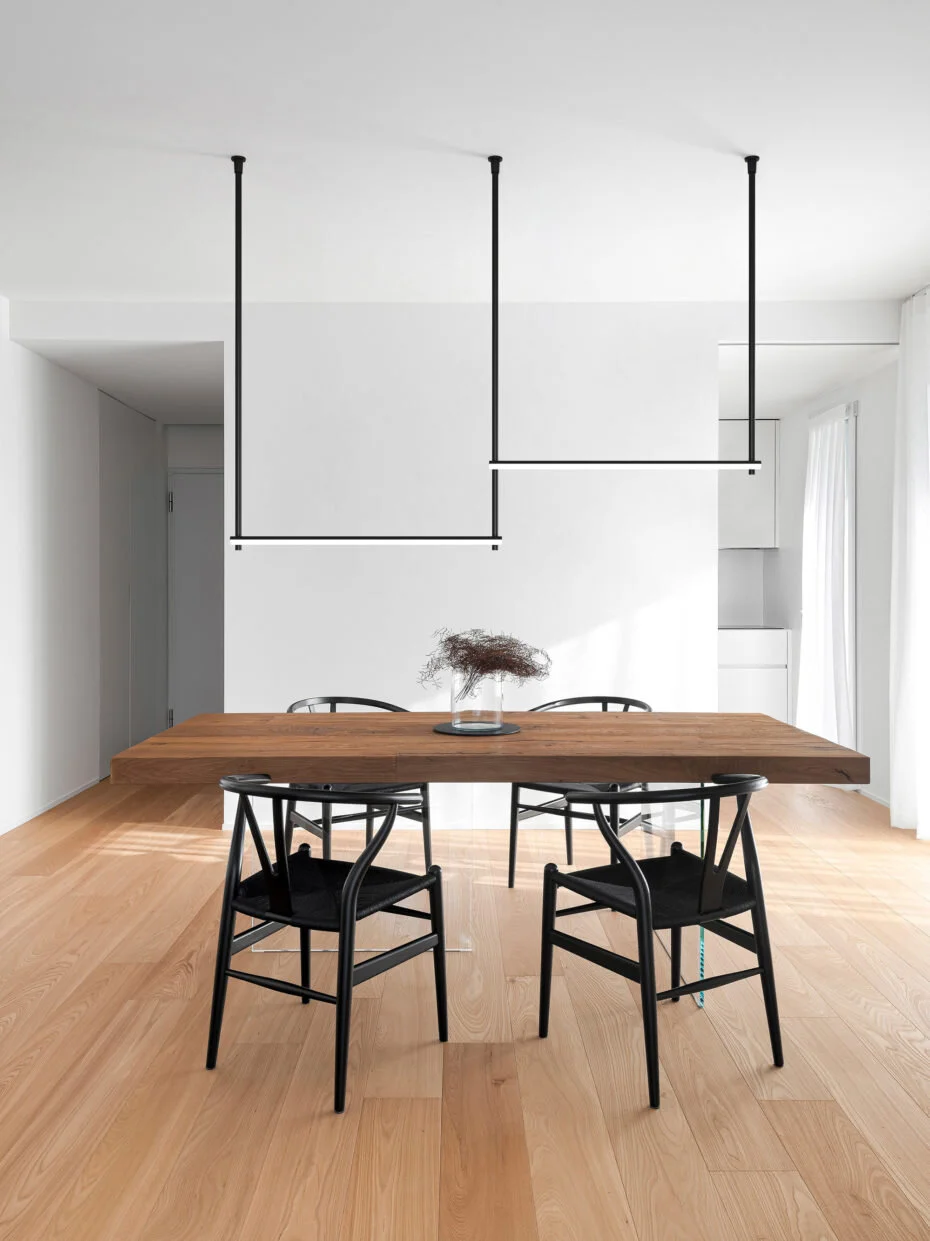"Oblique" table lamp by Vincent Van Duysen. Photo: FLOS
by Fabian Peters for Stylepark.com
“Light is the ultimate building material for me!” says Vincent van Duysen. “It is always a central part of every architectural concept that I develop.” The architect and designer has long since gained world fame with his designs. In the last few months Hotel August in Antwerp or the home of Kim Kardashian and Kanye West that he realized as a collaborative Belgian project with Axel Vervoordt and the garden designers from Wirtz Landscape Architects, were featured in virtually every important architecture and design magazine. His style is characterized by a minimalist thrust, which though informed by archetypes is never sober and never comes across as spartan. And it is marked above all by Van Duysen’s love of material, and of course by the fact that his calm designs and architectures are not the result of radical omissions. Instead, he reduces the houses and objects he designs to basic geometric shapes and through his choice of material lends them an elegant simplicity. Similarly, with regard to light van Duysen hates anything loud and bright. “I always try to employ light discretely,” he says. He aims to achieve something that is both calm and atmospheric. Not invisible, but unobtrusive.
Back in 2016, Italian luminaire manufacturer Flos asked Vincent Van Duysen to design a lighting system. Although he had already designed numerous items of furniture and other objects it was the first time he designed a luminaire. And it was immediately a great success. “Infra-Structure” is a highly diverse range whose basic components are tubular aluminum tracks. They are suspended from the ceiling via vertical rods and can be joined to one another to form the desired final length. Lamps and spotlights can be easily attached to the tracks using magnets. Vincent Van Duysen also designed several eyecatching luminaires for “Infra-Structure”, which lend the collection a strong signature look. One design features a tubular-shaped body that is fastened at each end to the two tracks. Several of these luminaires together with the tracks produce an industrial-style network of tubes beneath the ceiling – or an infrastructure as the name says. Van Duysen’s handwriting is also obvious in the disc-shaped luminaire he designed for the system. Its design is derived directly from the designer’s unique style and corresponds to some of his early ceramic designs. Its flatness and circular shape form a striking contrast to the light tracks, while simultaneously emphasizing the graphic appearance of “Infra-Structure”.
Vincent Van Duysen designed the system mainly as an option for the contract world, i.e., offices, hotels and stores. “However, we soon realized that many customers were also installing “Infra-Structure” in their own homes. It was this realization that prompted us to create ‘Episode 2’.” While “Infra-Structure” is intended for use in large rooms or spaces “Episode 2” also allows compact solutions. Here the basic element is no longer the tracks but rather ceiling mounts that can be used to install suspension luminaires. Moreover, two ceiling mounts can be connected with a tubular luminaire which makes it possible to work with different heights. “For ‘Episode 2’ I wanted to increase the graphic element of the original version while also introducing a playful and poetic aspect. Another consideration was to enable attractive lighting concepts that were more suited to private settings and smaller spaces such as corridors and stairways,” says Van Duysen by way of explaining his approach. “That’s why it was so important to me that the individual elements also work as stand-alone pieces." This explains why for “Infra-Structure Episode 2” the designer created a new sphere-shaped suspension luminaire as a companion for the striking disc-shaped model. With its clear geometrical shape, it adds a centered light to the collection that is ideal for illuminating or emphasizing specific areas such as a dining table or a work area. The various elements can be used to create figures that do not have as much of the technical appearance of the original version of “Infra-Structure” but are characterized more by the lightness and grace of a modern work of art. “I wanted to lend ‘Episode 2’ a very special expressiveness,” is how Vincent Van Duysen describes it.



